
PS-2020a / part01
.pdf
DICOM PS3.1 2020a - Introduction and Overview |
Page 21 |
5 The DICOM Communication Model
The DICOM Standard facilitates interoperability of devices claiming conformance. In particular, it:
•Addresses the semantics of Commands and associated data. For devices to interact, there must be standards on how devices are expected to react to Commands and associated data, not just the information that is to be moved between devices.
•Addresses the semantics of file services, file formats and information directories necessary for off-line communication.
•Is explicit in defining the conformance requirements of implementations of the Standard. In particular, a conformance statement must specify enough information to determine the functions for which interoperability can be expected with another device claiming conformance.
•Facilitates operation in a networked environment.
•Is structured to accommodate the introduction of new services, thus facilitating support for future medical imaging applications.
•Makes use of existing international standards wherever applicable, and itself conforms to established documentation guidelines for international standards.
Figure 5-1 presents the general communication model of the Standard, which spans both network (on-line) and media storage inter- change (off-line) communication. Applications may utilize any of the following transport mechanisms:
•the DICOM Message Service and Upper Layer Service, which provides independence from specific physical networking commu- nication support and protocols such as TCP/IP.
•the DICOM Web Service API and HTTP Service, which allows use of common hypertext and associated protocols for transport of DICOM services
•the Basic DICOM File Service, which provides access to Storage Media independently from specific media storage formats and file structures.
- Standard -
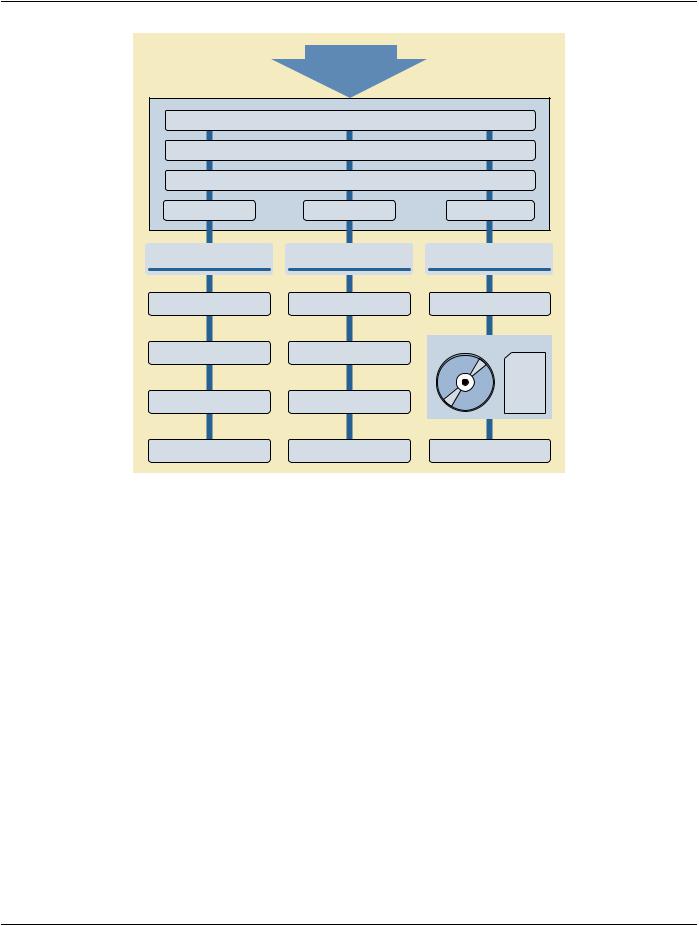
Page 22 |
DICOM PS3.1 2020a - Introduction and Overview |
Medical Images and related information
DICOM Application Entity
|
Service Class Specifications |
|
|
|
Information Objects Definitions |
|
|
Dataset Structure and Encoding - Data Dictionary |
|||
Message Exchange |
Web Services |
Media Interchange |
|
BOUNDARY: |
BOUNDARY: |
BOUNDARY: |
|
DICOM Upper Layer Service |
DICOM – HTTP |
DICOM Basic File Service |
|
DICOM Upper Layer |
HTTP |
Security Layer |
|
(Optional) |
|||
|
|
||
Security Layer |
Security Layer |
Physical Media and File Formats |
|
|
|||
(Optional) |
(Optional) |
<FILE> |
|
|
|
<FIELD> |
|
|
|
. |
|
|
|
. |
|
|
|
. |
|
TCP/IP Transport Layer |
TCP/IP Transport Layer |
</FIELD> |
|
|
|
</FILE> |
|
Network Exchange |
Network Exchange |
Media Storage Interchange |
|
On-Line Communication |
On-Line Communication |
Off-Line Communication |
|
Figure 5-1. General Communication Model |
|||
- Standard -

DICOM PS3.1 2020a - Introduction and Overview |
Page 23 |
6 Overview of The Content of The DICOM
Standard
6.1 Document Structure
DICOM consists of the following parts:
•PS3.1: Introduction and Overview (this document) •PS3.2: Conformance
•PS3.3: Information Object Definitions •PS3.4: Service Class Specifications •PS3.5: Data Structures and Encoding •PS3.6: Data Dictionary
•PS3.7: Message Exchange
•PS3.8: Network Communication Support for Message Exchange •PS3.9: Retired
•PS3.10: Media Storage and File Format for Media Interchange •PS3.11: Media Storage Application Profiles
•PS3.12: Formats and Physical Media •PS3.13: Retired
•PS3.14: Grayscale Standard Display Function •PS3.15: Security and System Management Profiles •PS3.16: Content Mapping Resource
•PS3.17: Explanatory Information •PS3.18: Web Services •PS3.19: Application Hosting
•PS3.20: Imaging Reports using HL7 Clinical Document Architecture •PS3.21: Transformations between DICOM and other Representations
These parts of the Standard are related but independent documents. A brief description of each Part is provided in this section.
6.2 PS3.2: Conformance
PS3.2 of the DICOM Standard defines principles that implementations claiming conformance to the Standard shall follow:
•Conformancerequirements.PS3.2specifiesthegeneralrequirementsthatmustbemetbyanyimplementationclaimingconformance. It references the conformance sections of other parts of the Standard.
•ConformanceStatement.PS3.2definesthestructureofaConformanceStatement.Itspecifiestheinformationthatmustbepresent in a Conformance Statement. It references the Conformance Statement sections of other parts of the Standard.
- Standard -
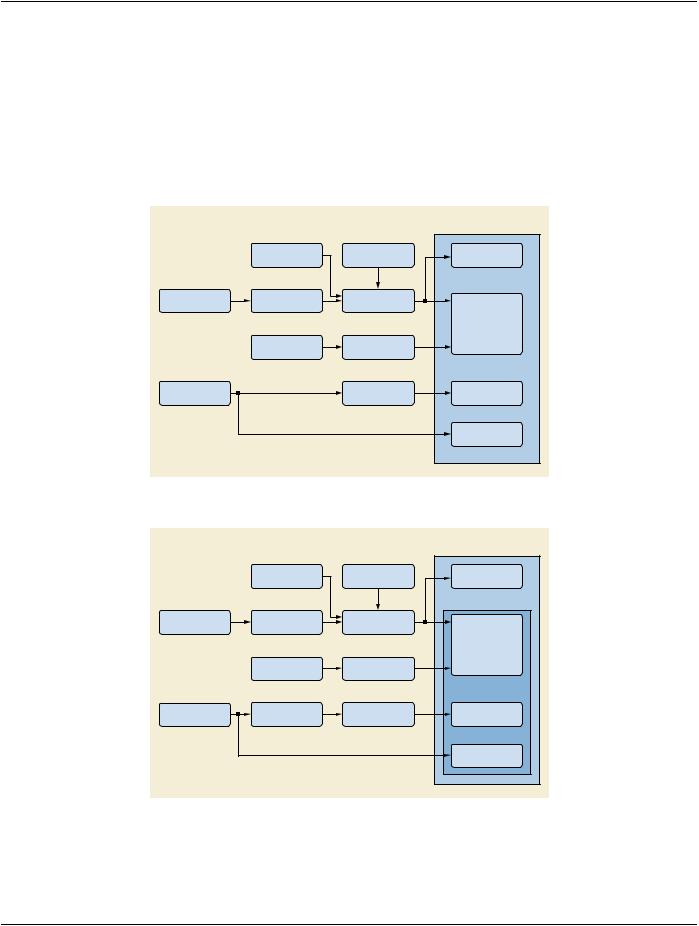
Page 24 |
DICOM PS3.1 2020a - Introduction and Overview |
PS3.2 does not specify a testing/validation procedure to assess an implementation's conformance to the Standard.
Figure 6.2-1 and Figure 6.2-2 depict the construction process for a Conformance Statement for both network communication and media exchange. A Conformance Statement consists of the following parts:
•Set of Information Objects that is recognized by this implementation •Set of Service Classes that this implementation supports
•Set of communications protocols or physical media that this implementation supports •Set of security measures that this implementation supports.
DICOM Conformance
Statement Document
|
PS3.14 |
PS3.16 |
|
|
|
Grayscale Standard |
Content Mapping |
Implementation |
|
|
Display Function |
Resource |
Model |
|
PS3.6 |
PS3.5 |
PS3.3 |
|
|
Data Dictionary |
Data Structure and |
Information |
|
|
Semantics |
Object Definitions |
SOP Classes, |
||
|
||||
|
|
|
||
|
|
|
Roles, |
|
|
PS3.7 |
PS3.4 |
and |
|
|
Transfer |
|||
|
|
Service Class |
Syntaxes |
|
|
Media Exchange |
|
||
|
Specifications |
|
||
|
|
|
||
PS3.15 |
|
PS3.8 |
|
|
|
|
Network |
Communication |
|
Security Profiles |
|
Communications |
||
|
Stack |
|||
|
|
Support |
||
|
|
|
||
|
|
|
Security Measures |
Figure 6.2-1. Construction Process for a Network Conformance Claim
DICOM Conformance
Statement Document
|
PS3.14 |
PS3.16 |
|
|
|
Grayscale Standard |
Content Mapping |
Implementation |
|
|
Display Function |
Resource |
Model |
|
PS3.6 |
PS3.5 |
PS3.3 |
Application Profiles |
|
Data Dictionary |
Data Structure and |
Information |
|
|
Semantics |
Object Definitions |
SOP Classes, |
||
|
||||
|
|
|
||
|
|
|
Roles, |
|
|
PS3.10 |
PS3.4 |
and |
|
|
Transfer |
|||
|
Media Application |
Service Class |
Syntaxes |
|
|
|
|||
|
Profile |
Specifications |
|
|
PS3.15 |
PS3.12 |
PS3.11 |
|
|
|
Media Formats & |
Media Storage & |
|
|
Security Profiles |
Physical Media for |
File Format for |
Physical Media |
|
|
Data Interchange |
Data Interchange |
|
|
|
|
|
Security Measures |
Figure 6.2-2. Construction Process for a Media Conformance Claim
- Standard -

DICOM PS3.1 2020a - Introduction and Overview |
Page 25 |
6.3 PS3.3: Information Object Definitions
PS3.3 of the DICOM Standard specifies a number of Information Object Classes that provide an abstract definition of real-world en- tities applicable to communication of digital medical images and related information (e.g., waveforms, structured reports, radiation therapy dose, etc.). Each Information Object Class definition consists of a description of its purpose and the Attributes that define it. An Information Object Class does not include the values for the Attributes that comprise its definition.
Two types of Information Object Classes are defined: normalized and composite.
Normalized Information Object Classes include only those Attributes inherent in the real-world entity represented. For example the studyInformationObjectClass,whichisdefinedasnormalized,containsstudydateandstudytimeAttributesbecausetheyareinherent in an actual study. Patient name, however, is not an Attribute of the study Information Object Class because it is inherent in the patient on which the study was performed and not the study itself.
Composite Information Object Classes may additionally include Attributes that are related to but not inherent in the real-world entity. For example, the Computed Tomography Image Information Object Class, which is defined as composite, contains both Attributes that are inherent in the image (e.g., image date) and Attributes that are related to but not inherent in the image (e.g., patient name). Composite Information Object Classes provide a structured framework for expressing the communication requirements of images where image data and related data needs to be closely associated.
TosimplifytheInformationObjectClassdefinitions,theAttributesofeachInformationObjectClassarepartitionedwithsimilarAttributes being grouped together. These groupings of Attributes are specified as independent modules and may be reused by other Composite Information Object Classes.
PS3.3 defines a model of the Real World along with the corresponding Information Model that is reflected in the Information Object Definitions. Future editions of this Standard may extend this set of Information Objects to support new functionality.
To represent an occurrence of a real-world entity, an Information Object Instance is created, which includes values for the Attributes of the Information Object Class. The Attribute values of this Information Object Instance may change over time to accurately reflect the changing state of the entity that it represents. This is accomplished by performing different basic operations upon the Information Object Instance to render a specific set of services defined as a Service Class. These Service Classes are defined in PS3.4 of the Standard.
6.4 PS3.4: Service Class Specifications
PS3.4 of the DICOM Standard defines a number of Service Classes. A Service Class associates one or more Information Objects with one or more Commands to be performed upon these objects. Service Class Specifications state requirements for Command Elements and how resulting Commands are applied to Information Objects. Service Class Specifications state requirements for both providers and users of communications services.
PS3.4 of the DICOM Standard defines the characteristics shared by all Service Classes, and how a Conformance Statement to an individual Service Class is structured. It contains a number of normative annexes that describe individual Service Classes in detail.
Examples of Service Classes include the following:
•Storage Service Class
•Query/Retrieve Service Class
•Basic Worklist Management Service Class
•Print Management Service Class.
PS3.4 defines the operations performed upon the Information Objects defined in PS3.3. PS3.7 defines the Commands and protocols for using the Commands to accomplish the operations and notifications described in PS3.4.
6.5 PS3.5: Data Structure and Semantics
PS3.5 of the DICOM Standard specifies how DICOM applications construct and encode the Data Set information resulting from the use of the Information Objects and Services Classes defined in PS3.3 and PS3.4 of the DICOM Standard. The support of a number of standard image compression techniques (e.g., JPEG lossless and lossy) is specified.
- Standard -

Page 26 |
DICOM PS3.1 2020a - Introduction and Overview |
PS3.5 addresses the encoding rules necessary to construct a Data Stream to be conveyed in a Message as specified in PS3.7 of the DICOM Standard. This Data Stream is produced from the collection of Data Elements making up the Data Set.
PS3.5 also defines the semantics of a number of generic functions that are common to many Information Objects. PS3.5 defines the encoding rules for international character sets used within DICOM.
6.6 PS3.6: Data Dictionary
PS3.6 of the DICOM Standard is the centralized registry that defines the collection of all DICOM Data Elements available to represent information, along with elements utilized for interchangeable media encoding and a list of uniquely identified items that are assigned by DICOM.
For each element, PS3.6 specifies:
•its unique tag, which consists of a group and element number,
•its name,
•its value representation (character string, integer, etc),
•its value multiplicity (how many values per attribute),
•whether it is retired.
For each uniquely identified item, PS3.6 specifies:
•its unique value, which is numeric with multiple components separated by decimal points and limited to 64 characters,
•its name,
•its type, either Information Object Class, definition of encoding for data transfer, or certain well known Information Object Instances,
•in which Part of the DICOM Standard it is defined.
6.7 PS3.7: Message Exchange
PS3.7 of the DICOM Standard specifies both the service and protocol used by an application in a medical imaging environment to exchange Messages over the communications support services defined in PS3.8. A Message is composed of a Command Stream defined in PS3.7 followed by an optional Data Stream as defined in PS3.5.
PS3.7 specifies:
•the operations and notifications (DIMSE Services) made available to Service Classes defined in PS3.4,
•rules to establish and terminate associations provided by the communications support specified in PS3.8, and the impact on out- standing transactions,
•rules that govern the exchange of Command requests and responses,
•encoding rules necessary to construct Command Streams and Messages.
6.8 PS3.8: Network Communication Support For Message Exchange
PS3.8oftheDICOMStandardspecifiesthecommunicationservicesandtheupperlayerprotocolsnecessarytosupport,inanetworked environment, communication between DICOM applications as specified in PS3.3, PS3.4, PS3.5, PS3.6, and PS3.7. These commu- nication services and protocols ensure that communication between DICOM applications is performed in an efficient and coordinated manner across the network.
The communication services specified in PS3.8 are a proper subset of the services offered by the OSI Presentation Service (ISO 8822) and of the OSI Association Control Service Element (ACSE) (ISO 8649). They are referred to as the Upper Layer Service, which allows peer applications to establish associations, transfer messages and terminate associations.
- Standard -

DICOM PS3.1 2020a - Introduction and Overview |
Page 27 |
This definition of the Upper Layer Service specifies the use of the DICOM Upper Layer Protocol in conjunction with TCP/IP transport protocols.
The TCP/IP communication protocol specified by PS3.8 is a general purpose communication protocol not specific to the DICOM Standard. Figure 5-1 shows this protocol stack.
6.9PS3.9:Retired(formerlyPoint-to-pointCommunicationSupportForMessage Exchange)
PS3.9 of the DICOM Standard previously specified the services and protocols used for point-to-point communications in a manner compatible with ACR-NEMA 2.0. It has been retired.
6.10 PS3.10 Media Storage and File Format for Media Interchange
PS3.10 of the DICOM Standard specifies a general model for the storage of medical imaging information on removable media (see Figure 6.10-1). The purpose of this Part is to provide a framework allowing the interchange of various types of medical images and related information on a broad range of physical storage media.
Note
See Figure 5-1 for understanding how the media interchange model relates to the network model.
PS3.10 specifies:
•a layered model for the storage of medical images and related information on storage media. This model introduces the concept of media storage application profiles, which specify application specific subsets of the DICOM Standard to which a media storage implementation may claim conformance. Such a conformance applies only to the writing, reading and updating of the content of storage media.
•a DICOM file format supporting the encapsulation of any Information Object;
•a secure DICOM file format supporting the encapsulation of a DICOM file format in a cryptographic envelope;
•a DICOM file service providing independence from the underlying media format and physical media.
PS3.10 defines various media storage concepts:
•the method to identify a set of files on a single medium;
•the method for naming a DICOM file within a specific file system.
- Standard -
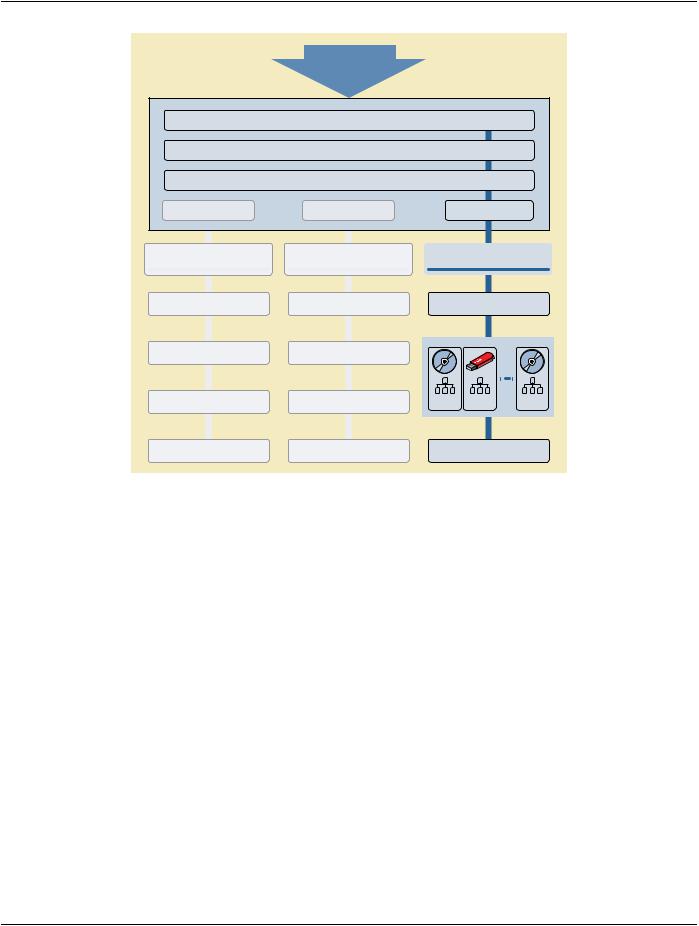
Page 28 |
DICOM PS3.1 2020a - Introduction and Overview |
Medical Images and related information
DICOM Application Entity
Service Class Specifications
Information Objects Definitions |
|
|
Dataset Structure and Encoding - Data Dictionary |
|
|
Media Interchange |
||
|
BOUNDARY: |
|
DICOM Basic File Service |
||
|
Security Layer |
|
|
(Optional) |
|
MEDIUM A |
MEDIUM B |
MEDIUM n |
Physical Medium |
Physical Medium |
Physical Medium |
and |
and |
and |
Medium Format |
Medium Format |
Medium Format |
Media Storage Interchange |
||
Off-Line Communication |
||
Figure 6.10-1. DICOM Communication Model for Media Interchange
6.11 PS3.11: Media Storage Application Profiles
PS3.11 of the DICOM Standard specifies application specific subsets of the DICOM Standard to which an implementation may claim conformance. These application specific subsets will be referred to as Application Profiles in this section. Such a conformance statement applies to the interoperable interchange of medical images and related information on storage media for specific clinical uses. It follows the framework, defined in PS3.10, for the interchange of various types of information on storage media.
An Application Profile annex is organized into the following major parts:
•The name of the Application Profile, or the list of Application Profiles grouped in a related class
•A description of the clinical context of the Application Profile
•The definition of the media storage Service Class with the device roles for the Application Profile and associated options
•Informative section describing the operational requirements of the Application Profile
•Specification of the Information Object Classes and associated Information Objects supported and the encoding to be used for the data transfer
•The selection of media formats and physical media to be used
•Other parameters that need to be specified to ensure interoperable media interchange
•Security parameters that select the cryptographic techniques to be used with secure media storage Application Profiles
- Standard -
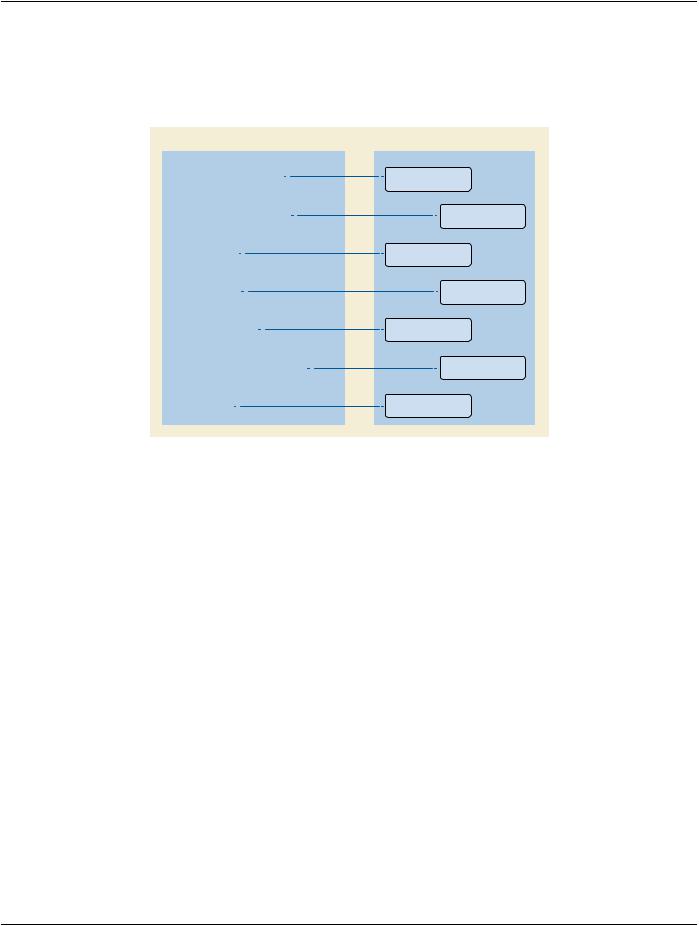
DICOM PS3.1 2020a - Introduction and Overview |
Page 29 |
The structure of DICOM and the design of the Application Profile mechanism is such that extension to additional Information Object Classes and the new exchange media is straightforward.
Note
Figure 6.11-1 shows how individual aspects of an Application profile map to the various parts of the DICOM Standard.
PS3.11: Media Storage Application Profiles |
Parts of DICOM Standard |
|
|
PS3.2 |
|
Conformance Requirements |
Conformance |
|
|
PS3.3 |
|
Information Object Definitions |
Information |
|
|
Object Definitions |
|
|
PS3.4 |
|
Service Classes |
Service Class |
|
|
Specifications |
|
|
PS3.5 |
|
Transfer Syntax |
Data Structure and |
|
Semantics |
||
|
||
|
PS3.10 |
|
File Format, Directory |
Media Storage and File |
|
Format for Data Interchange |
||
|
||
|
PS3.12 |
|
Medium Format, Physical Medium |
Media Formats and Physical |
|
Media for Data Interchange |
||
|
||
|
PS3.15 |
|
Security Profile |
Security Profiles |
Figure 6.11-1. Relationship Between an Application Profile and Parts of DICOM
6.12 PS3.12: Storage Functions and Media Formats For Data Interchange
PS3.12oftheDICOMStandardfacilitatestheinterchangeofinformationbetweenapplicationsinmedicalenvironmentsbyspecifying: •A structure for describing the relationship between the media storage model and a specific physical media and media format. •Specific physical media characteristics and associated media formats.
6.13PS3.13:Retired(formerlyPrintManagementPoint-to-pointCommunication Support)
PS3.13 previously specified the services and protocols used for point-to-point communication of print management services. It has been retired.
6.14 PS3.14: Grayscale Standard Display Function
PS3.14 specifies a standardized display function for consistent display of grayscale images. This function provides methods for calib- rating a particular display system for the purpose of presenting images consistently on different display media (e.g., monitors and printers).
The chosen display function is based on human visual perception. Human eye contrast sensitivity is distinctly non-linear within the luminance range of display devices. This Standard uses Barten's model of the human visual system.
6.15 PS3.15: Security and System Management Profiles
PS3.15oftheDICOMStandardspecifiessecurityandsystemmanagementprofilestowhichimplementationsmayclaimconformance.
Securityandsystemmanagementprofilesaredefinedbyreferencingexternallydevelopedstandardprotocols,suchasDHCP,LDAP,
- Standard -
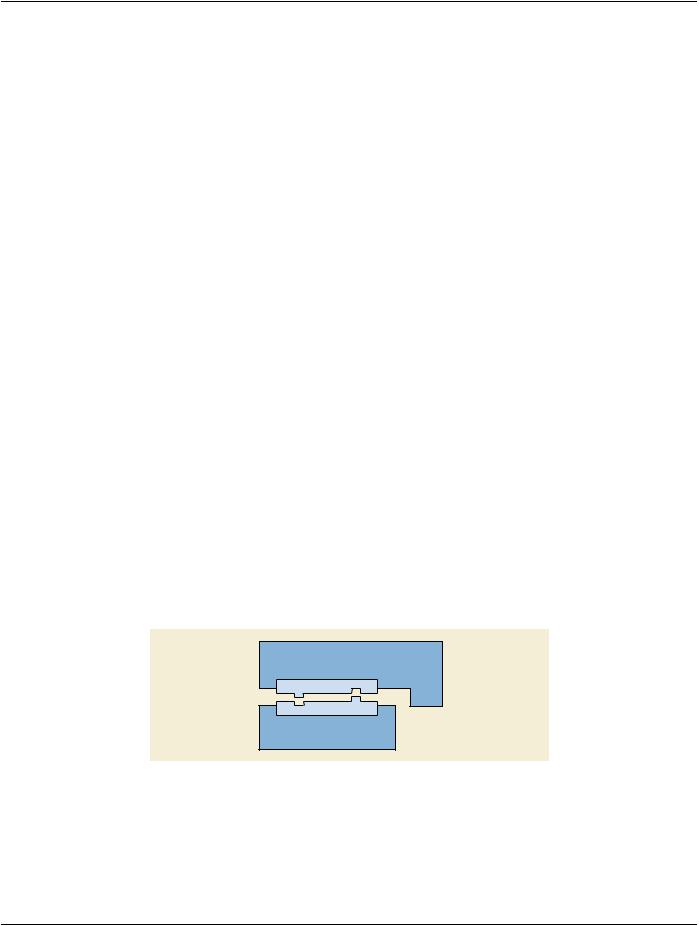
Page 30 |
DICOM PS3.1 2020a - Introduction and Overview |
TLS and ISCL. Security protocols may use security techniques like public keys and "smart cards". Data encryption can use various standardized data encryption schemes.
ThisPartdoesnotaddressissuesofsecuritypolicies.TheStandardonlyprovidesmechanismsthatcanbeusedtoimplementsecurity policies with regard to the interchange of DICOM objects. It is the local administrator's responsibility to establish appropriate security policies.
6.16 PS3.16: Content Mapping Resource
PS3.16 of the DICOM Standard specifies:
•templates for structuring documents as DICOM Information Objects •sets of coded terms for use in Information Objects
•a lexicon of terms defined and maintained by DICOM •country specific translations of coded terms
6.17 PS3.17: Explanatory Information
PS3.17 of the DICOM Standard specifies:
•informative and normative annexes containing explanatory information
6.18 PS3.18: Web Services
PS3.18 of the DICOM Standard specifies the means whereby Web Services can be used for retrieving or storing a DICOM object.
Requests that retrieve data specify the media type (format) of the response body. Requests that store data specify the media type of the request body.
The HTTP requests as defined within this Standard are sufficient for the HTTP server to act as a DICOM SCU (Service Class User) to retrieve or store the requested objects from an appropriate DICOM SCP (Service Class Provider) using baseline DICOM function- ality as defined in PS3.4 and PS3.7, which is to say that the HTTP server can act as a proxy for the DICOM SCP.
6.19 PS3.19: Application Hosting
PS3.19 of the DICOM Standard specifies an Application Programming Interface (API) to a DICOM based medical computing system into which programs written to that standardized interface can "plug-in" (see Figure 6.19-1). A Hosting System implementer only needs to create the standardized API once to support a wide variety of add-on Hosted Applications.
Hosting System (e.g., Medical Workstation)
API (Socket)
API (Plug)
Hosted Application (Plug-in)
Figure 6.19-1. Interface Between a Hosted Application and a Hosting System
In the traditional "plug-in" model, the "plug-in" is dedicated to a particular host system (e.g., a web browsing program), and might not run under other host systems (e.g., other web browsing programs). PS3.19 defines an API that may be implemented by any Hosting System. A "plug-in" Hosted Application written to the API would be able run in any environment provided by a Hosting System that implements that API (see Figure 6.19-2).
- Standard -
